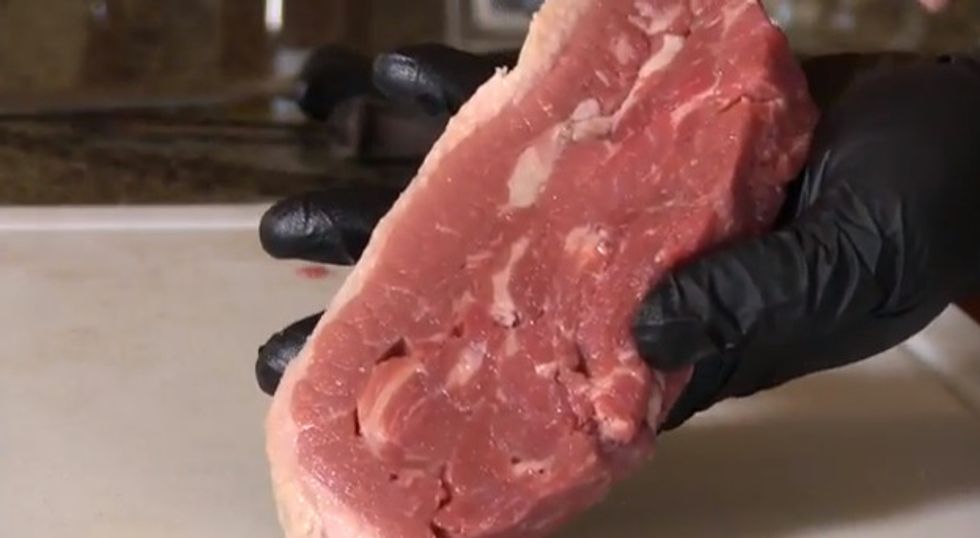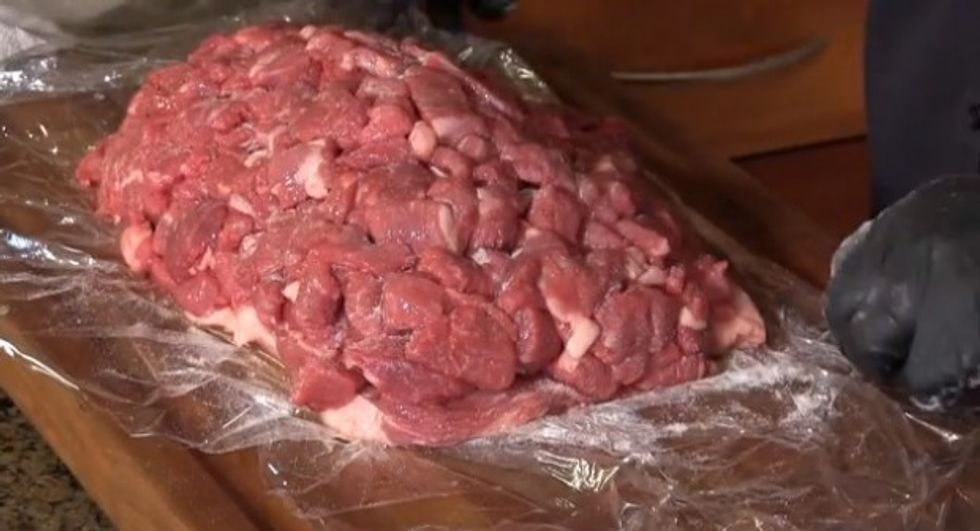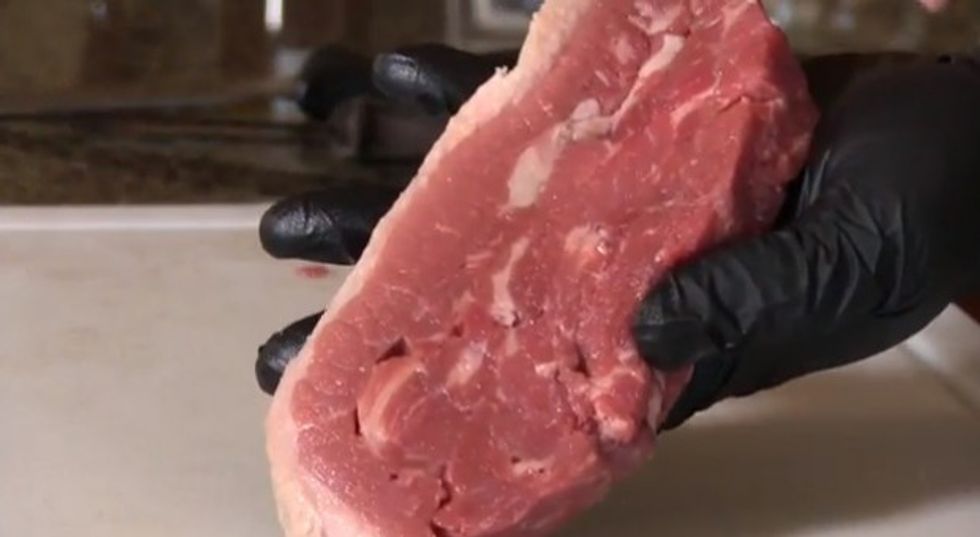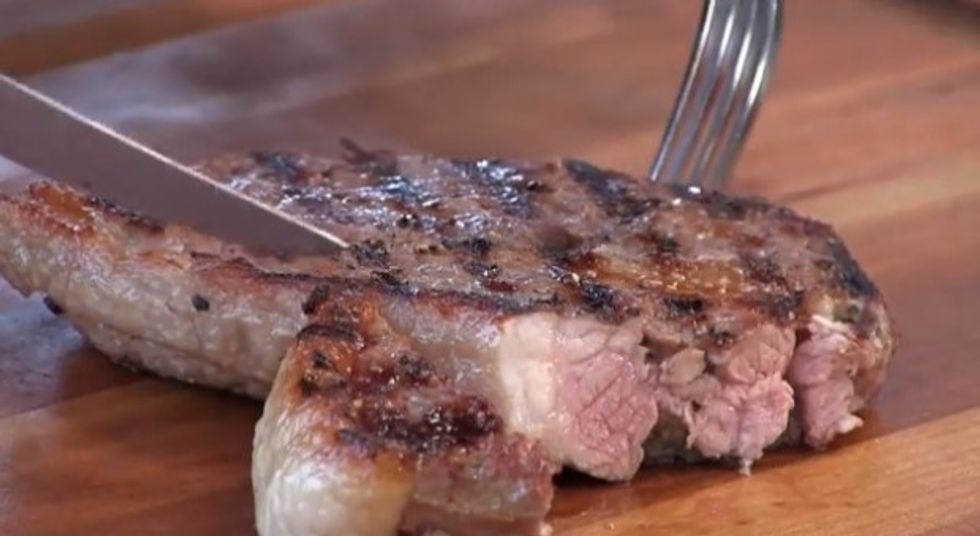
Image source: YouTube

You might pay top dollar for a nice steak dinner at a restaurant, but is the cut you purchased really what you're getting?
The YouTuber running the channel Ballistic BBQ recently demonstrated how pieces of meat can be pressed together using "meat glue" and then passed off as rib-eye steak.
The Ballistic BBQ guy mixed transglutaminase, a plant-derived enzyme, with stew meat and brisket meat. He piled it all together on a meat fat cap and compacted it using a vacuum sealer.

"Despicable stuff," he said in the video of places that dishonestly use such a practice.
After letting the meat pieces come together over night, Ballstic BBQ sliced off a piece.

"I think it looks pretty convincing," he said. "I mean it has that nice little nugget of fat there that is a rib-eye."
The man later explained that his main motivation for making the video was to "shed some light on some deception that's going on out there. I know there are some legitimate uses for this product. ... Where I really have a problem is where a restaurant or a dining hall is trying to pass off a bunch of scraps welded together as real steak."

Watch Ballistic BBQ's demonstration:
The idea of restaurants deceiving patrons with meat that had been pressed together to look like a prime cut of steak made headlines a few years ago as well. At that time, Eric Mittenthal with the American Meat Institute told the New York Daily News that it's "highly unlikely chefs are using them to take lesser pieces of meat and pass them off as prime using transglutaminase."
"Not only is it impractical from a time and cost perspective, it is illegal to pass one type of meat off as another," he continued. "More commonly it is used to bind two cone shaped tenderloins together for portion control."
According to the Food and Drug Administration, transgultaminase is an approved binder for meat and poultry proteins. If a customer is concerned they might get a formed meat product, the FDA encourages them to ask restaurant staff.
"Foodservice operators have guidance on how to prepare a non-intact product, such as a formed roast or steak, based on the Food Code, which is managed by FDA and enforced by State and local jurisdictions based on whether and how the State or local laws adopt the most recent version of the Food Code (2009)," the FDA stated on its website. "[The] Food Safety and Inspection Service generally defers to the health department of the State, city, or county to inspect foodservice establishments (restaurants, cafeterias and grocery stores). Each State makes its own rules, often based on FDA's retail model Food Code. If a consumer believes a restaurant is misleading or misrepresenting a product that is formed, they should first contact their local health department."
On the issue of passing one type of meat off for another, the fish industry has recently been called out for doing just that. In 2013, a DNA study of more than 1,200 fish samples revealed they were mislabeled 33 percent of the time.
(H/T: Reddit)